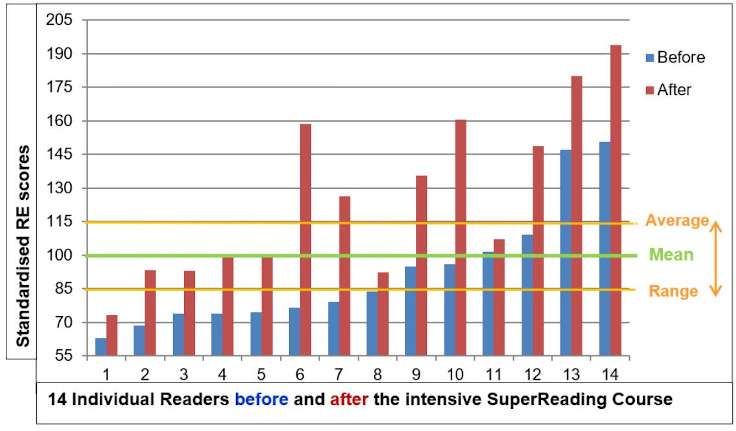The SuperReading course aims to develop strategies for both
better comprehension and higher reading speed in late adolescence and adulthood, working on the silent reading mode.
The course originated in the USA, when Ron Cole, a life
coach, developed a syllabus to help managers improve their
reading speed and comprehension rates (Cole 2009). Cole
obtained remarkable results with his course, which he measured through reading tests administered during sessions. He
also noted that dyslexic participants benefited from the course
despite their reading difficulties, and even showed higher
levels of improvement than normotypical readers. To investigate this circumstance further, the course was duplicated in
London, at South Bank University LLU+ (Language and
Literacy Unit), with a group of 15 dyslexic participants who
confirmed the results obtained in the USA (Cooper 2009a, b).
Further research was carried out in London, with similar results (Cooper 2012).
Thanks to an agreement with the promoters of the course,
this research group has translated and adapted the course materials to the Italian academic context (Santulli and Scagnelli
2017; Santulli and Scagnelli 2018). To date 25 groups of
students have been taught, most of them at the IULM
University, where the course is part of the curriculum and
awards three credits. Other groups have been taught elsewhere, four of them in other universities, and three with younger participants.
Yet, the most innovative and distinguishing feature of the
programme is a reading technique, named eye-hopping, which
requires participants to read texts arranged in parallel columns
containing 2–5 words each (with increasing difficulty), ‘hopping’ with their eye from the middle of one column to the
middle of the other, with a parallel movement of their forefinger. This technique aims to improve the efficiency of eye
movement and increase the visual span. The eye-hopping exercise combines the arrangement in columns with the use of a
pointer (normally, the forefinger, or a pen/pencil), which
guides the eye movement, helping to reduce regressions and
increase the visual span. Constant practice, both during classes
and at home, develops the ability to catch increasingly more
words at one single glance, thus making reading faster without
jeopardising comprehension.
The results of this research show that, given the complex
character of reading and comprehension competence, a multifaceted approach makes it possible to develop reading strategies effectively in adulthood. The combination of
metacognitive abilities, motivation, memory and eye training
yields remarkable improvements, and the analysis of data
demonstrates the efficacy of SuperReading in enhancing reading competence, as it reduces reading time, increasing at the
same time comprehension and reading effectiveness.

Please note that these studies were done in physical classes in a group setting.
While the online course has the exact same information, the tests were given on paper.
The online course features the tests on your screen, which is a different medium.
The authors of the studies can only verify their results as relates to those group courses.


